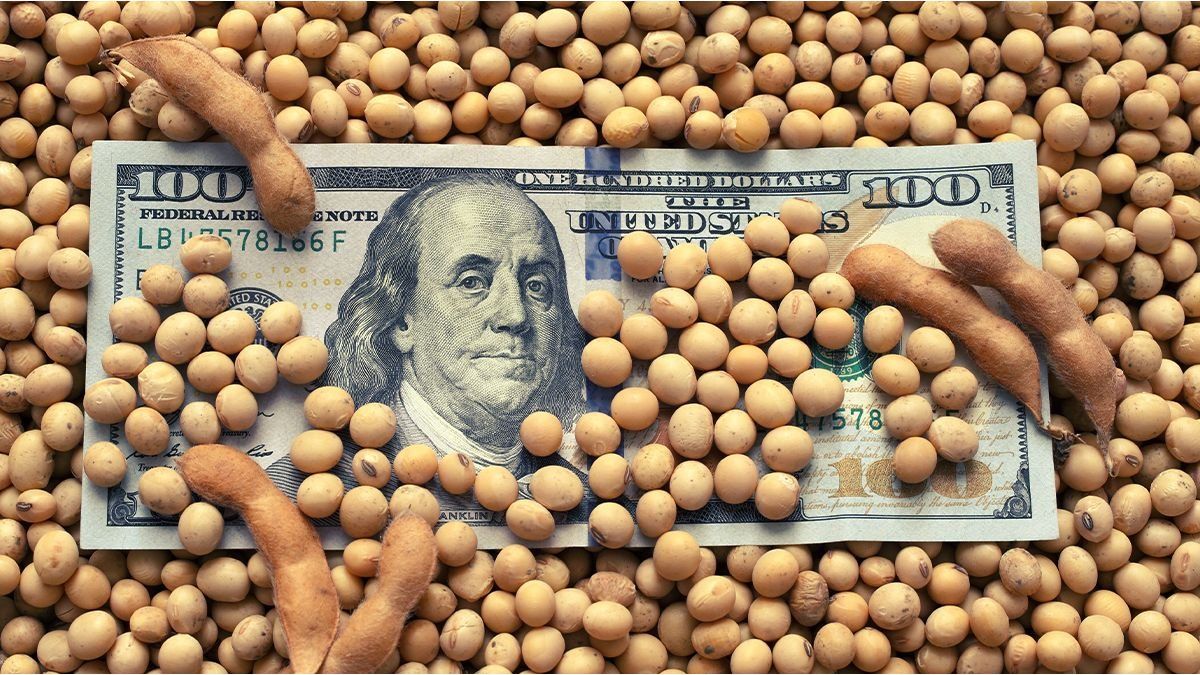He soybean dollar comes to an end. Shortly after the end of the third edition of the Export Increase Program (PIE), where an exchange rate of $300 per dollar is recognized to oilseed exports, there is at least one certainty. According to official sources, and at least for now, a fourth edition of the benefit for the countryside is “not under discussion”, despite the first rumors that appear in the sector.
Next May 31 will expire the possibility for soybean exporters to take advantage of the “discount” price offered by the Ministry of Economy, although it will continue in force for regional economies until next August 30. In this framework, what assessment can be made of the measure so far? and what is next?
Industry sources consulted by Ambit They assure that the soybean dollar, despite the benefits it entails, generates strong distortions that, in the long run or in the short run, end up having repercussions. In turn, they highlight that this improvement in the exchange rate occurs in the midst of the unease due to the poor results of the harvest where Argentina lost both in terms of price and quantity, not counting the decrease in its position in the international market. .
Soybean dollar: what is expected for the last wheels
Economists see it as very difficult for these last rounds to reach the amount stipulated by the Ministry of Economy, around US$5,000 million.
During the first Soy Dollar, the Central Bank managed to accumulate US$4,966 million and in the second US$2,326 million. Instead, in this latest edition, It has already accumulated $600 million despite the fact that it lasted twice as long as previous versions and more products were included.
“This reflects the negative effects of the drought that implies a lower physical volume of exports (we estimate that it will mean between 18 and 19 billion dollars less in exports during 2023), and not a retention by exporters,” analyzed the economist. Florencia Iragui from LCG consultancyconsulted by Ámbito.
The Economist Salvador Vitelli of roman group He added to this debate that: “with six wheels still ahead, only 61% of the estimated amount has been liquidated, if one did it in comparative terms to know how much we should be liquidating in the next days that are left of May to meet the objective or the estimation, some US$326 million should be liquidated in each round of average”. Until now, the maximum of all the settlements was on April 13 with US$574 million and since then, they have been around US$200 million.
“I see it as unlikely that the goal will be met, except for some unforeseen event, but if it continues like this, everything indicates that we will be below the US$5,000 million that was initially estimated. ”, he asserted.
measure balance
If there is something that all economists agree on, it is that this new edition worked more to “replenish” than to “accumulate” reserves.
According to Iragui, the reference exchange rate “was not altered” so that “while the Central Bank paid $300 for each dollar it bought, it charged $220 for each dollar it sold. This accounts for the enormous sacrifice that he is making in order to accumulate only 15% of what he accumulated in the first Soy Dollar at the cost of paying an implicit exchange rate that is twice as expensive. In this way, it is evident that there is a much deeper problem that is not solved with this type of measure, ”he asserted.
Camilo Tiscornia, Director of C&T Economic AdvisorsHe attributed this meager result so far to previous soybean dollars, the poor harvest and the exchange rate outlook for this year.
“Last year the soybean dollars were made, with which part of the liquidation had already been advanced. To this we must add that the harvest was not good, so there is not much balance to sell and that this exchange rate of $300 is not entirely attractive with the prospects ahead, so they prefer to save it and wait even more. . Really, the performance of the reserves has not been good, ”he asserted.
Soybean dollar: what is the impact in numbers for the Central Bank
According to Vitelli, the Central Bank issued $390,000 million in this edition and of those $3,042 million that it managed to accumulate, it could only retain $700 million. “This means having been able to retain 23% of the liquidated.”
For the Romano Group analyst, the use of dollars to intervene in financial exchange rates ended up having an impact on his attempt to accumulate reserves through the soybean dollar.
The balance then for Vitelli is defined in the following graph that explains the net accumulated that the Central Bank managed to retain by comparing the previous editions of the soybean dollar.
While in the first edition it obtained 65% of the liquidation and in the soybean 2 dollar 74%, in the latter it could only retain 23%.
WhatsApp Image 2023-05-20 at 7.03.52 PM.jpeg
In short, he assures that for the next few days he does not expect a “increase in currency settlements due to the decrease in the price of soybeans in Chicago.
Regarding the future outlook, he warned that “there will be strong exchange rate pressure” starting in June because the genuine dollars are going to be absent. “VIt will be very difficult for us to see a central bank that still ends up being a buyer even in June, where there are already quite interesting demands for currencies in terms of seasonality. So we enter a complicated panoramaor,” Vitelli concluded.
Source: Ambito




